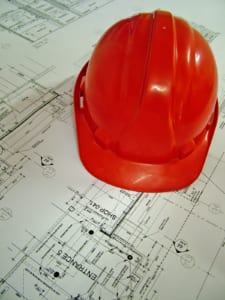 Does your company use mechanical equipment to lift, move and/or manipulate materials? When compared to manualmaterial handling, mechanical offers several key benefits: it improves productivity, reduces the physical workload on workers, boosts worker morale, and lowers the risk of certain types of injuries – specifically those involving the joints, ligaments, muscles, nerves, spine, neck and back. However, there’s still an inherit risk of injury associated with the use of mechanical material handling, which is why it’s important for employers and workers to follow some basic safety tips.
Does your company use mechanical equipment to lift, move and/or manipulate materials? When compared to manualmaterial handling, mechanical offers several key benefits: it improves productivity, reduces the physical workload on workers, boosts worker morale, and lowers the risk of certain types of injuries – specifically those involving the joints, ligaments, muscles, nerves, spine, neck and back. However, there’s still an inherit risk of injury associated with the use of mechanical material handling, which is why it’s important for employers and workers to follow some basic safety tips.
Hard Hats
Hard hats can prove to be an invaluable tool in prevented injuries associated with mechanical material handling. When a heavy load is lifted above a worker’s head, he or she should wear an OSHA-approved hard hat to protect their head. If the load happens to drop suddenly, it could strike a nearby worker’s head, causing serious injury.
OSHA noted that hard hats should be worn with the bill forward for optimal protection. They should also be designed to resist penetration by objects, absorb shock, be water-resistant, and have instructions on how to adjust the suspension and headband.
Don’t Overload Machines
Whether it’s a forklift, crane, roll lifter, rail-based system, or any other type of mechanical material handling device, workers should use caution to ensure it’s not being overloaded. All machines and equipment have a maximum carrying capacity, and loading it beyond this capacity could result in serious injury.
It’s the employer’s responsibility to train workers on the proper use of mechanical material handling equipment, explaining the respective equipment’s carrying capacity and how to operate it properly.
Center The Load
Another helpful safety tip to follow when using mechanical material handling equipment is to center the load as much as possible. This isn’t always an option depending on the specific type of machine being used. However, most machines will allow the user to adjust the position of the load. Ideally, the load should be centered so its center of gravity isn’t swaying in one direction more than the other.
Adjust Load To Lowest Position When Traveling
When using mechanical material handling equipment to transport a load – even if it’s just a couple hundred feet away – workers should adjust the load to the lowest position possible. Doing so reduces the risk of the load accidentally falling and striking a worker’s head.

